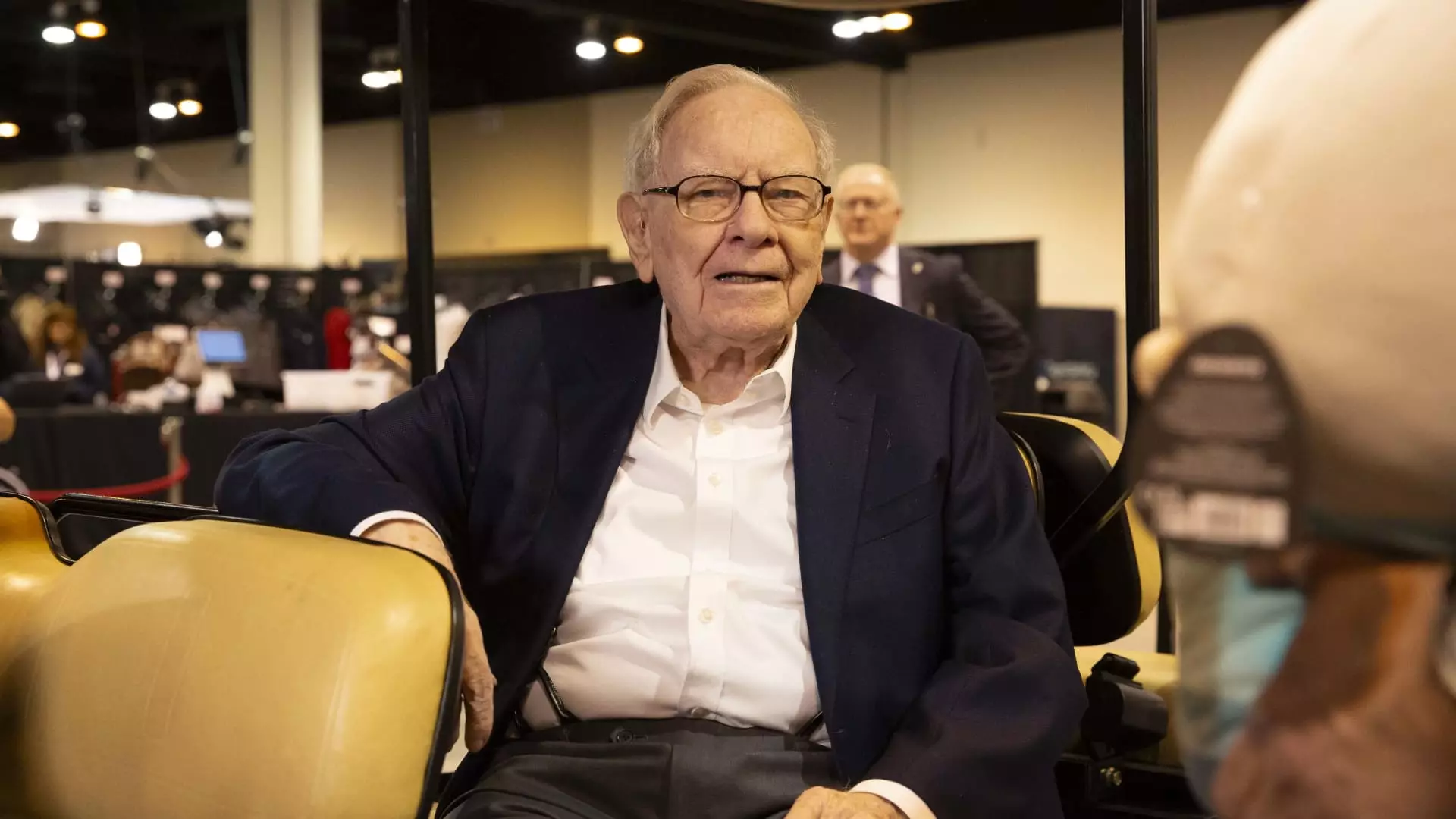In a landscape where major stocks have faced significant downturns, Warren Buffett’s Berkshire Hathaway has emerged as a remarkable outlier. With a staggering 17% return year-to-date—contrasting sharply with the S&P 500’s 6% decline—Berkshire stands tall among the top echelon of large-cap stocks. As we delve into this phenomenon, it becomes clear that Buffett’s approach continues to resonate with investors who value consistency and quality amid chaos. Buffett’s wisdom usually shines brightest when the market is clouded by panic, and this year is no exception.
The upcoming Berkshire Hathaway annual shareholder meeting in Omaha has garnered unprecedented attention, suggesting that a renewed optimism surrounds Buffett’s investment philosophy. An intriguing development is the introduction of the VistaShares Target 15 Berkshire Select Income ETF, designed to capitalize on the strength of Berkshire’s core holdings. This ETF has carved out a niche by positioning itself on the same pedestal as Buffett’s esteemed portfolio, which includes heavyweights like Apple and Coca-Cola. The mix of bonds and stocks from this ETF reflects an attempt to marry Buffett’s time-tested investment ethos with the modern demand for income generation—an effort that underscores the growing pressure for investments that offer immediate returns.
Investment Dynamics and Long-Term Returns
The numbers behind Berkshire’s success are staggering. An eye-watering 185% return over the last five years—and tripling the S&P 500’s performance—demonstrates Buffett’s acumen in selecting stocks that weather economic storms. While his portfolio remains well-balanced, it also serves as a mirror reflecting broader market dynamics. The year has been marked by extreme volatility since President Trump’s inauguration, stirring fears that have led many investors toward more conservative choices. Amid this chaos, Buffett’s strategy of holding substantial cash reserves has proven prescient; he has maneuvered through the turbulence by trimming stakes in larger firms like Apple.
The question that begs to be asked is whether Buffett’s stock-picking prowess is a product of sheer experience or if it is finely tuned intuition. Many will argue it is the latter, particularly when looking at his steadfast philosophy of reinvesting cash instead of issuing dividends. For years, shareholders have varied in their opinions regarding this lack of immediate payouts, especially those who desire a more consistent income stream from their investments. And yet, believers in Buffett’s vision have, up until now, found it hard to argue with success.
Evolving Strategies in a Volatile Market
One of the pivotal elements contributing to Berkshire Hathaway’s outperformance is the shift towards quality investments in the wake of market instability. Adam Patti, CEO of VistaShares, aptly stated that the focus has shifted, and this versatility underscores a fundamental truth: resilient companies with solid fundamentals will thrive while others falter. Buffett’s preference for equities—especially American equities—speaks volumes about his confidence in the long-term potential of the U.S. economy, despite the noise and volatility of the present day.
This added focus on generating income has led to innovative financial products designed to replicate Buffett’s strategies while catering to an audience hungry for dividends. The VistaShares Target 15 ETF, for instance, attempts to balance the appeal of Berkshire’s equity selections with an annual income goal of 15%. This kind of ingenuity reflects a critical shift in how investors are navigating the waters of uncertainty, demonstrating a responsive adaptation to prevailing market sentiments.
A New Breed of Investor
The infusion of modern investment vehicles that promise income opportunities is a response to changing demographics among investors. Today’s investor is not just looking for long-term growth; they’re also seeking immediate gratification through income-generating assets. The rise of the ETF that mirrors Buffett’s model signifies a broader trend where the traditional tenets of investing are being reinterpreted to meet contemporary needs.
In this reimagined investment environment, the challenge will be to maintain the legendary status of Buffett’s ballpark returns, all while cultivating an income stream that satisfies new-age investors. This represents an exciting yet daunting endeavor, with the potential to bolster or undermine Buffett’s legacy. For those seeking to emulate Buffett’s success while demanding immediate rewards, the market’s transformation reflects a fertile ground for innovation—an imperative in times that call for adaptive strategies.
The enduring appeal of Buffett’s philosophy does promise a beacon of hope for those navigating the choppy waters of the current market, even as it hints at the necessity for evolution within investment frameworks. The landscape may change, but the essence of wise investing, championed for decades by Buffett, remains a torch for many to follow.

